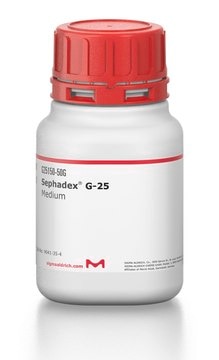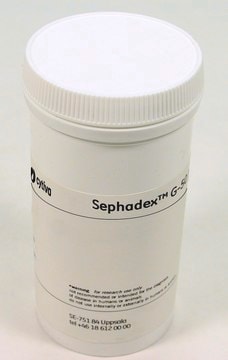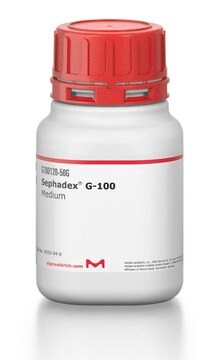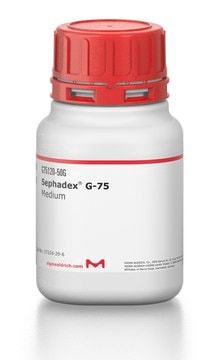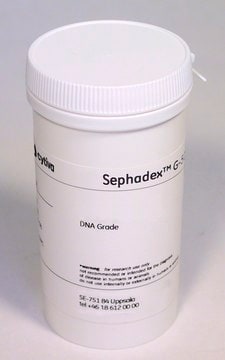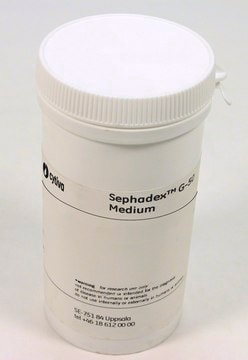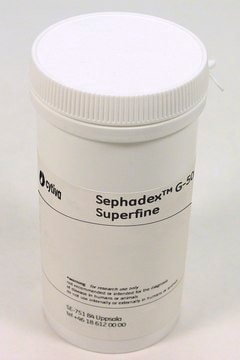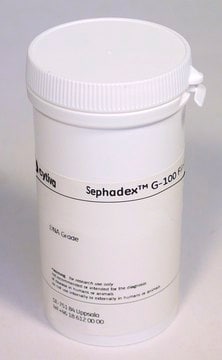S5897
Sephadex® G-50
DNA grade, BioReagent, for molecular biology, fine
About This Item
Productos recomendados
grado
for molecular biology
Línea del producto
BioReagent
Formulario
beads
técnicas
DNA purification: suitable
Matriz
cross-linked dextran
hinchazón
1 g swells to 9-11 mL
diámetro microesfera
20-80 μm
tamaño de poro
exclusion limit (20 bp dsDNA (rA)20)
pH
2-10
actividad extraña
DNase, RNase, none detected
temp. de almacenamiento
room temp
cadena SMILES
O1C(C(C(C(C1CO)O)O)O)OCC2OC(C(C(C2O)O)O)OCC(O)C(O)C(O)C(O)C=O
InChI
1S/C18H32O16/c19-1-5(21)9(23)10(24)6(22)3-31-17-16(30)14(28)12(26)8(34-17)4-32-18-15(29)13(27)11(25)7(2-20)33-18/h1,5-18,20-30H,2-4H2
Clave InChI
FZWBNHMXJMCXLU-UHFFFAOYSA-N
¿Está buscando productos similares? Visita Guía de comparación de productos
Descripción general
S5897-100G′s updated product number is GE17-0573-02
Aplicación
Características y beneficios
- Excellent recovery
- Minimal sample dilution
- Quick and easy to use
Información legal
Producto relacionado
Código de clase de almacenamiento
11 - Combustible Solids
Clase de riesgo para el agua (WGK)
WGK 3
Punto de inflamabilidad (°F)
Not applicable
Punto de inflamabilidad (°C)
Not applicable
Equipo de protección personal
Eyeshields, Gloves, type N95 (US)
Elija entre una de las versiones más recientes:
Certificados de análisis (COA)
¿No ve la versión correcta?
Si necesita una versión concreta, puede buscar un certificado específico por el número de lote.
¿Ya tiene este producto?
Encuentre la documentación para los productos que ha comprado recientemente en la Biblioteca de documentos.
Los clientes también vieron
Active Filters
Nuestro equipo de científicos tiene experiencia en todas las áreas de investigación: Ciencias de la vida, Ciencia de los materiales, Síntesis química, Cromatografía, Analítica y muchas otras.
Póngase en contacto con el Servicio técnico


